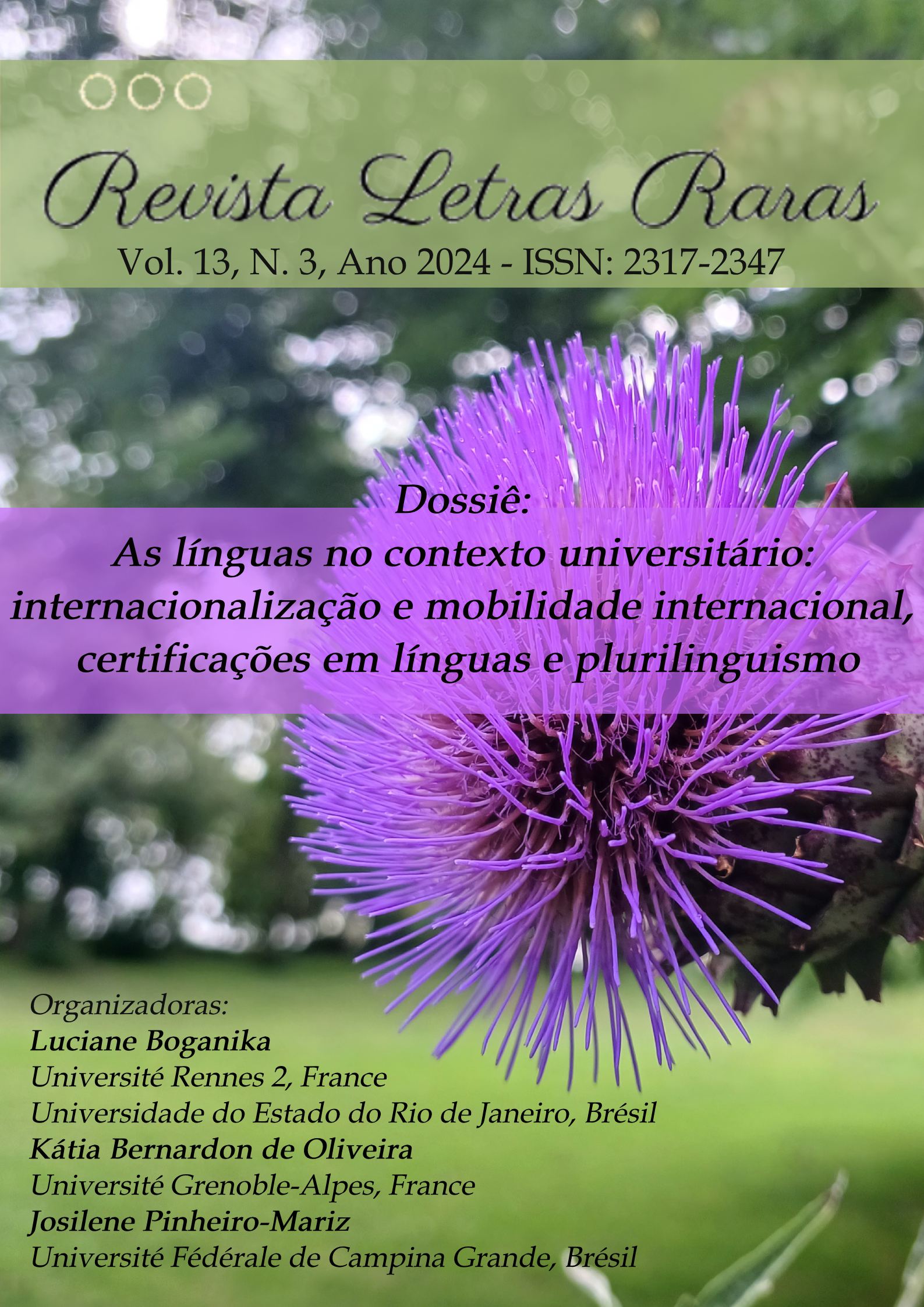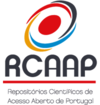The signification in portuguese as a foreign language classroom
a proposol for the didactic teaching of semantic knowledge
DOI:
https://doi.org/10.5281/zenodo.12786330Keywords:
Semantics, PLE, Celpe-brasAbstract
It is known that the teaching of Portuguese as a Foreign Language (PLE) is still very focused on the display of linguistic forms and grammatical rules, and that this focus ends up disregarding the social use of the language (cf. Dell”Isola et al, 2003). For this reason we aim to defend the intersection of the field of Semantics in the context of the PLE classroom, arguing that the teaching of PLE needs a didactic approach of semantic knowledge, given that this perspective promotes the critical use of language. This approach is supported by exams such as the Certificado de Proficiência em Língua Portuguesa para Estrangeiros (Celpe-bras), which seeks to assess the candidate through real uses of the language, and not by manipulating grammatical forms (Brasil, 2020; Brasil, 2021). As a methodology, we make a bibliographical research, for later descriptive analysis that will culminate in the proposal of an exercise that, we hope, will help the student in the interpretation of an Elemento Provocador (EP), material presented in the oral part of the Celpe-bras test. From a theoretical point, we will use Ferraz e Costa (2021), Dell’Isola et al (2003), Antunes (2012), Oliveira (2008), Moura (2006), Ilari (2001) e Ullman (1964). As a result, it is observed that the reading of the EP texts evokes, even if implicitly, a dialogue between the communicative approach and the understanding of linguistic aspects in which the scope of signification acts decisively.
Downloads
References
ALMEIDA, L. C. B. Efeito retroativo do Celpe-Bras no processo de ensino/aprendizagem do português: um estudo qualitativo. Revista do GEL, n. 3, p. 28-45, 2020. Disponível em: https://doi.org/10.21165/gel.v17i3.2226. Acesso em 22 mar. 2022.
ANTUNES, I. Território das palavras: estudo do léxico em sala de aula. São Paulo: Parábola, 2012.
BISPO, F. C. S. et al. O Uso do Jeitinho Brasileiro como um Recurso de Poder nas Organizações do País. In: Anais do Simpósio de Excelência em Gestão e Tecnologia, 2008. Disponível em: https://www.aedb.br/seget/artigos2007.php?pag=28. Acesso em 26 mar. 2022.
BRASIL. Ministério da Educação. Documento-Base do exame Celpe-Bras. Brasília, DF, 2020. Disponível em: https://download.inep.gov.br/publicacoes/institucionais/avaliacoes_e_exames_da_educacao_basica/documento_base_do_exame_celpe_bras.pdf. Acesso em 22 mar. 2022.
______. Caderno de tarefas comentadas: Certificado de Proficiência em Língua Portuguesa para Estrangeiros CELPE-BRAS: edição 2019/2 [recurso eletrônico]. Brasília: Instituto Nacional de Estudos e Pesquisas Educacionais Anísio Teixeira, 2021. Disponível em: https://download.inep.gov.br/publicacoes/institucionais/avaliacoes_e_exames_da_educacao_basica/caderno_tarefas_comentadas_celpebras_edicao_2019_2_segunda_edicao.pdf. Acesso em 22 mar. 2022.
DELL’ISOLA, R. L. P. et al. A avaliação de proficiência em português língua estrangeira: o exame CELPE-Bras. Revista Brasileira de Linguística Aplicada, v. 3, n. 1, p. 153-184, 2003. Disponível em: https://doi.org/10.1590/S1984-63982003000100010. Acesso em 22 mar. 2022.
FARACO, C. A. Ensinar x Não ensinar gramática: ainda cabe essa questão?. Calidoscópio, v. 4, n. 1, p. 15-26, 2006. Disponível em: https://revistas.unisinos.br/index.php/calidoscopio/article/view/5983 . Acesso em 22 mar. 2022.
FERRAZ, M. M. T.; COSTA, T. M. C. (org.). Da (s) Semântica (s) à Sala de Aula: propostas didáticas de leitura e escrita. Campinas: Mercado Letras, 2021.
GONÇALVES, L. O ensino de gramática na aula de Português como língua estrangeira: Opções para um ensino diversificado. In: VASCONCELOS, S. I. C. C. (Org.). Práticas pedagógicas e material didático no ensino de português como língua não materna. São Carlos: Pedro & João Editores, 2020. p. 125-141.
HOUAISS, A.; VILLAR, M. Dicionário Houaiss da Língua Portuguesa. Rio de Janeiro: Objetiva, 2001.
ILARI, R. Introdução à Semântica: brincando com a gramática. São Paulo: Contexto, 2001.
MIRANDA, N. F. Formando Leitores através dos Gêneros Textuais Charges e Cartum. In: PARANÁ. Secretaria de Estado da Educação. Superintendência de Educação. Os Desafios da Escola Pública Paranaense na Perspectiva do Professor PDE. Curitiba: SEED/PR, 2016.
MOURA, H. M. M. Significação e contexto: uma introdução a questões de semântica e pragmática. Florianópolis: Insular, 2006.
OLIVEIRA, L. A. Manual de semântica. Petrópolis: Vozes, 2008.
RASKIN, V. Semantic Mechanisms of Humor. In: Studies in Linguistic and Philosophy, 24. Holland: D. Reidel Publishing Company, 1985, p. 325-335. Disponível em: https://www.researchgate.net/profile/Victor-Raskin/publication/273946710_Semantic_Mechanisms_of_Humor/links/564a508408ae295f644fc9ad/Semantic-Mechanisms-of-Humor.pdf. Acesso em 29 mar. 2022.
ULLMANN, S. Semântica: uma introdução à ciência do significado. Lisboa: Fundação Calouste Gulbenkian, 1964.
Downloads
Published
How to Cite
Issue
Section
License
Copyright (c) 2024 Revista Letras Raras

This work is licensed under a Creative Commons Attribution-NonCommercial 4.0 International License.







